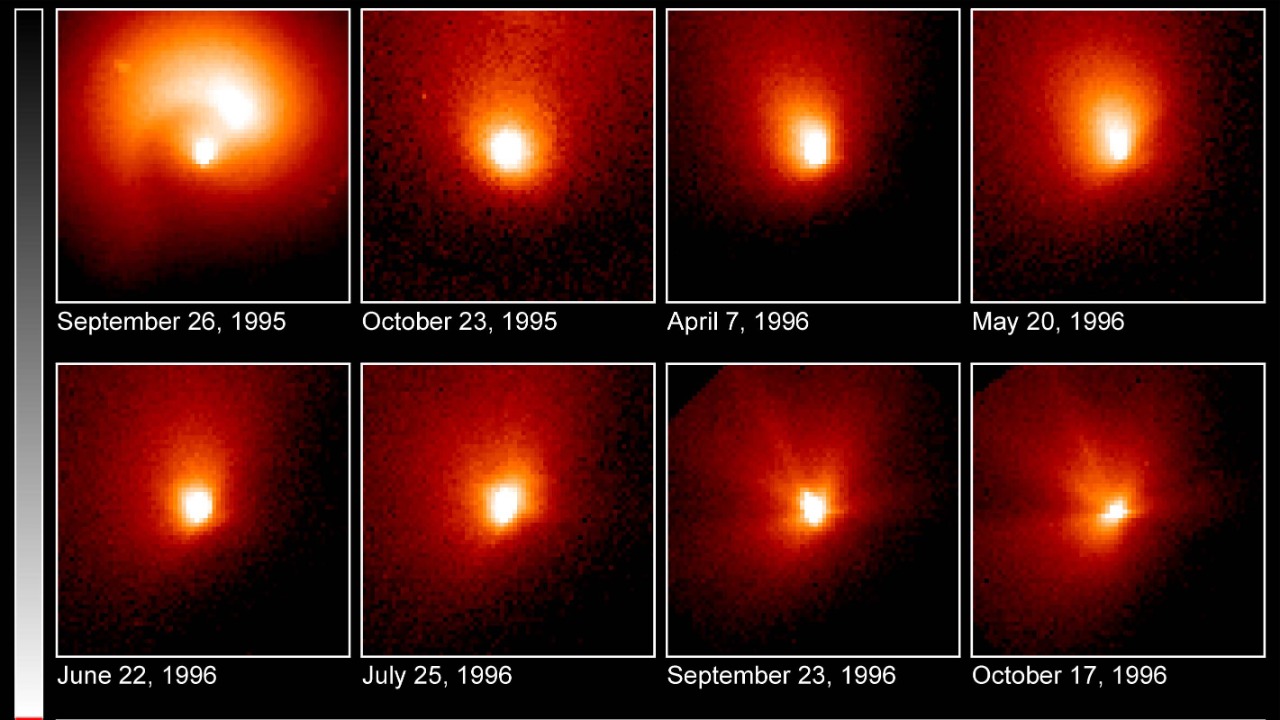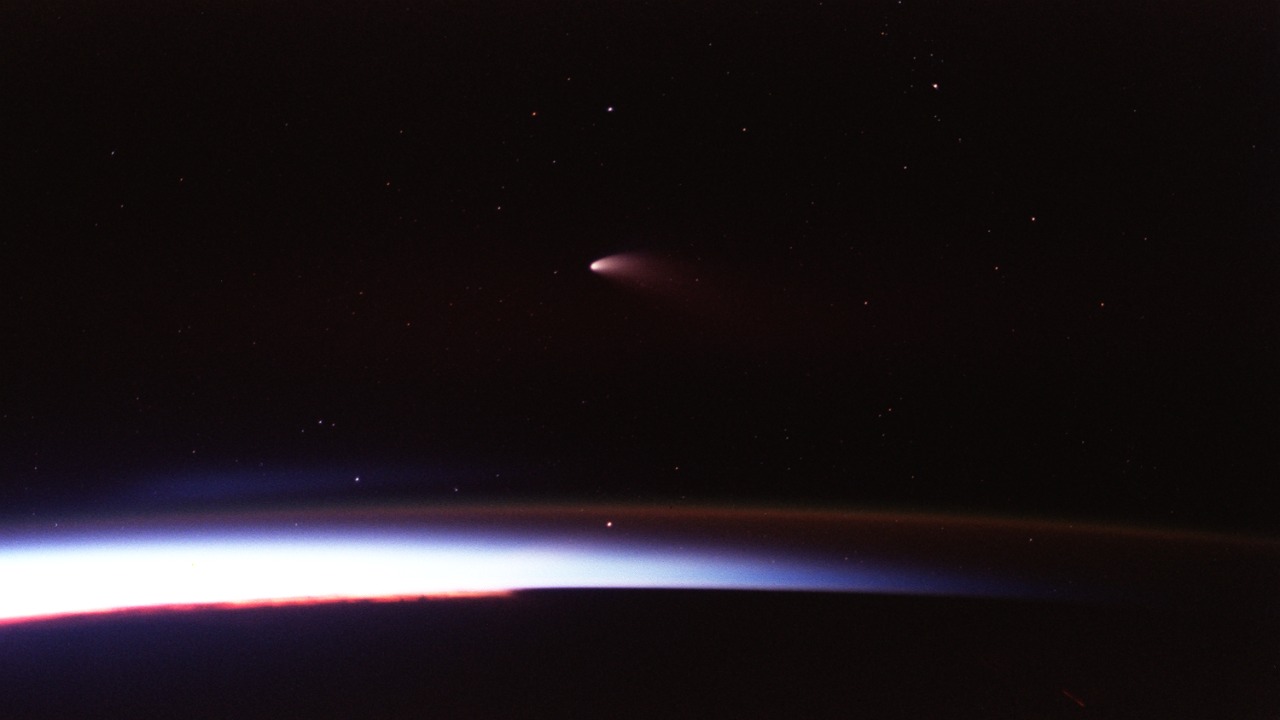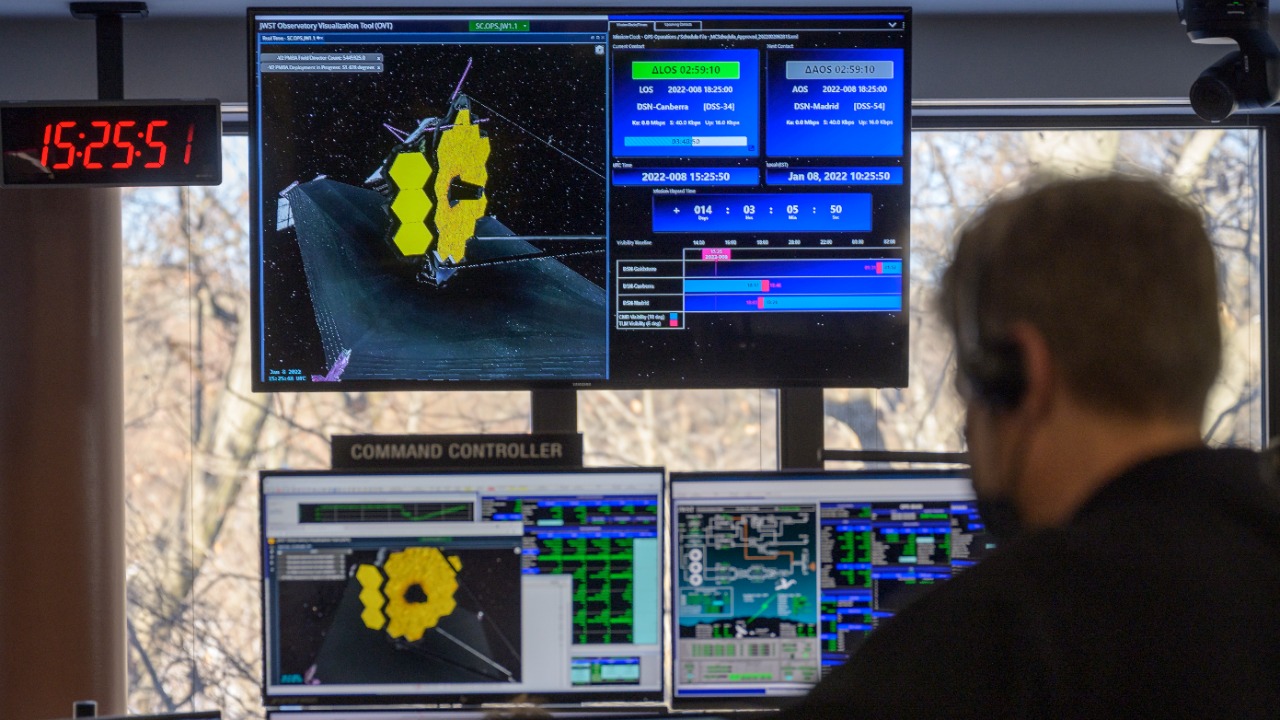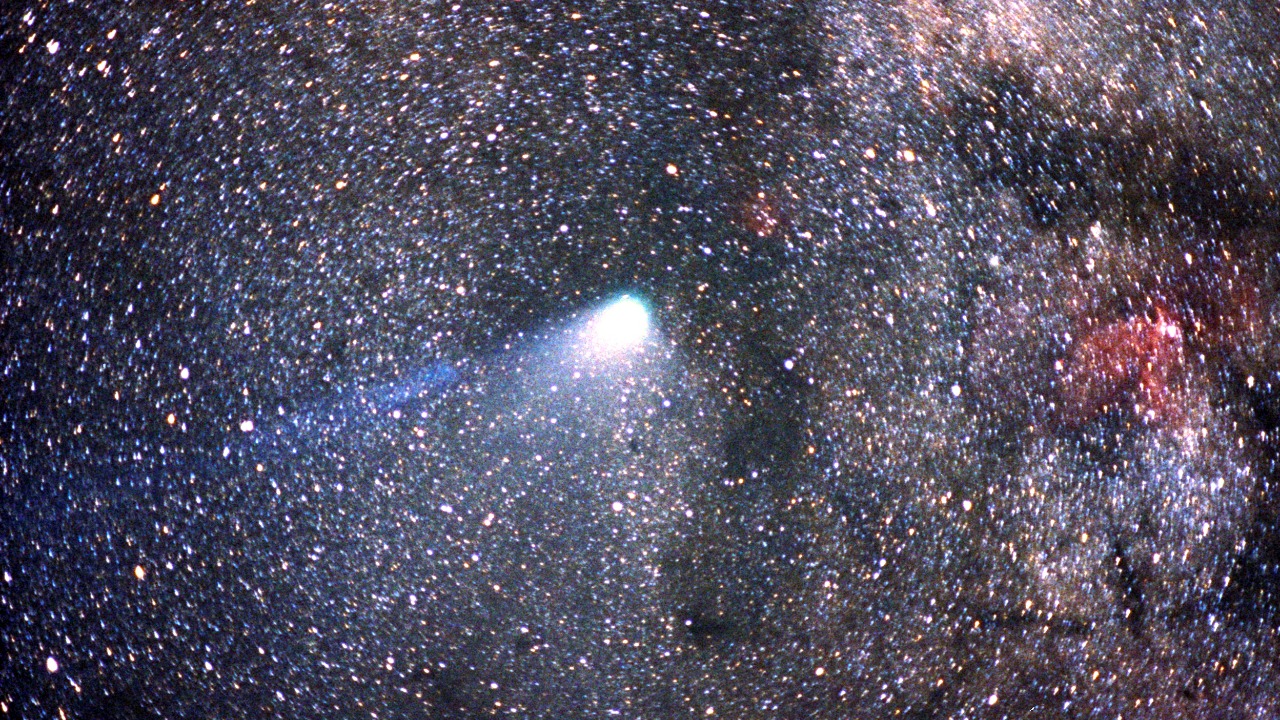
Comet Hale-Bopp, a celestial spectacle named after its co-discoverers Alan Hale and Thomas Bopp, held the world spellbound with its extraordinary brightness and visibility. This astronomical marvel was visible to the naked eye for a record-breaking 569 days, bridging the gap between scientific discovery and public fascination.
Discovery and Initial Observations

On July 23, 1995, amateur astronomers Alan Hale in New Mexico and Thomas Bopp in Arizona independently discovered the comet using their backyard telescopes. They spotted the comet beyond Jupiter, marking the beginning of an astronomical event that would captivate the world. The International Astronomical Union’s Circular 6180 quickly confirmed the comet’s position and orbit, validating the discovery of these amateur astronomers.
Early predictions about the comet’s brightness were made, noting its perihelion distance of 0.914 AU from the Sun in April 1997. These predictions set the stage for what would become one of the most remarkable celestial events of the 20th century. Source
Following the initial discovery, the comet was closely monitored by astronomers worldwide. Its trajectory was meticulously calculated, and its physical characteristics were analyzed. The comet’s large nucleus, estimated to be between 40-60 km in diameter, was a significant factor in its brightness. This size is considerably larger than most comets, which typically have nuclei of less than 10 km. The comet’s large size and its distance from the Sun at discovery, beyond the orbit of Jupiter, were indicative of its potential to become a significant celestial event. Source
Journey Through the Inner Solar System

The comet’s journey began in the Oort Cloud, following a hyperbolic orbit that brought it closest to Earth at 1.315 AU on March 22, 1997. This journey through the inner solar system was marked by a visibility period of 569 days, starting from its pre-discovery magnitude in 1995 and extending until it dimmed below naked-eye view in October 1997.
Key milestones of this journey included its peak brightness reaching -1 magnitude, making it visible even in light-polluted urban areas. This extraordinary visibility period and brightness made Hale-Bopp a comet like no other. Source
As Hale-Bopp journeyed closer to the Sun, it began to exhibit a level of activity unprecedented for a comet at such a distance. The heat from the Sun caused the ices in the comet’s nucleus to sublimate, creating a cloud of gas and dust known as the coma. This process also resulted in the formation of two distinct tails: a dust tail and an ion tail. The dust tail, composed of small particles pushed away from the Sun by radiation pressure, appeared yellowish and curved. The ion tail, made up of charged particles blown directly away from the Sun by the solar wind, appeared bluish and straight. Source
Exceptional Brightness and Visibility

Hale-Bopp was deemed the world’s brightest comet, a title it earned due to its large nucleus (estimated 40-60 km diameter) and high dust production. These factors led to a prominent coma and tail, contributing to its exceptional brightness and visibility.
Global naked-eye observations were recorded from both hemispheres for over 18 months, with sightings reported from locations as diverse as Antarctica and the Arctic. Public engagement was high, with amateur photos and sketches showing its double tail structure—one ion tail and one dust tail—spanning up to 30 degrees in the sky. Source
The comet’s brightness was not only due to its large size and high dust production but also due to its orbit’s orientation. The comet’s orbit was nearly perpendicular to the ecliptic plane, which meant that as it approached the Sun, it was also moving almost directly toward Earth. This resulted in a phenomenon known as forward scattering, where sunlight reflecting off the comet’s dust particles was directed toward Earth, enhancing the comet’s brightness. Additionally, the comet’s high intrinsic brightness and favorable viewing geometry meant that it was visible from Earth for an extended period, even when it was still far from the Sun. Source
Scientific Breakthroughs and Research

Space missions like the Ulysses spacecraft flyby in 1996 contributed to our understanding of Hale-Bopp. The spacecraft measured solar wind interactions with the comet’s atmosphere, providing valuable data for scientists.
Ground-based studies revealed the presence of organic molecules like hydrogen cyanide and methanol in the comet’s composition, advancing our understanding of comet formation. Furthermore, the detection of the first interstellar molecule, H2Cl+, in Hale-Bopp’s coma provided insights into pre-solar nebula chemistry. Source
One of the most significant scientific breakthroughs from Hale-Bopp was the discovery of deuterium in its composition. Deuterium, a heavy form of hydrogen, is thought to be a primordial substance from the formation of the solar system. The ratio of deuterium to hydrogen in the comet’s water provided valuable clues about the conditions in the early solar system. Additionally, the discovery of complex organic molecules in the comet’s coma suggested that comets could have played a role in delivering the building blocks of life to Earth. Source
Cultural and Societal Impact

The comet’s appearance had a significant impact on culture and society. It inspired art, media, and literature, making appearances in films and songs during the late 1990s. However, it also had a tragic association with the Heaven’s Gate cult suicide in March 1997, where 39 members linked the comet to their beliefs.
On a positive note, the comet’s 569-day spectacle led to increased memberships in astronomy clubs and educational programs, highlighting the public’s fascination and engagement with this astronomical event. Source
Lasting Legacy in Astronomy

Hale-Bopp played a significant role in popularizing comet science. It set records for observed brightness and duration, surpassing even the famous Halley’s Comet. This comet’s legacy continues to influence the field of astronomy, with ongoing studies of archived data and its influence on missions like Rosetta and future comet intercepts.
Its contribution to the “Great Comets” list reinforces Hale-Bopp as a benchmark for 20th-century astronomical events, leaving a lasting legacy in the field of astronomy. Source
Comet Hale-Bopp’s legacy extends beyond its record-breaking brightness and duration of visibility. It provided an unprecedented opportunity for scientists to study a comet over a long period and at a range of distances from the Sun. The wealth of data gathered during this period continues to be analyzed, leading to new insights into the nature of comets and the early solar system. Furthermore, the comet’s appearance stimulated the development of new technologies for observing and studying comets, which continue to be used in current and future comet missions. Source